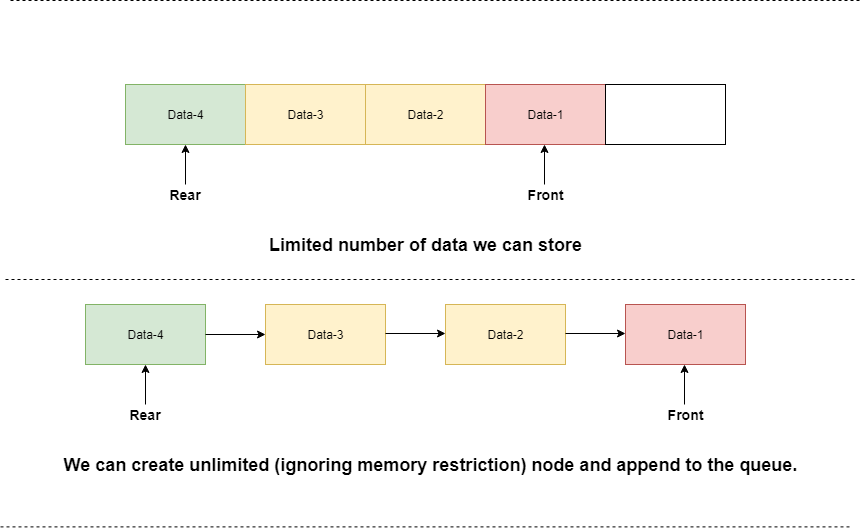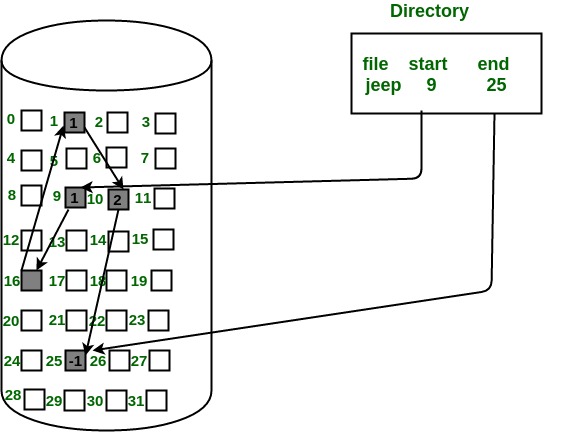

- #Linked list stack top method how to#
- #Linked list stack top method full#
- #Linked list stack top method code#
Throw new NoSuchElementException("You cannot remove elements from the front of an empty list")
#Linked list stack top method full#
* the data formerly located at the front of the list Properties of linked list relaxed us from checking if the stack is full in push operation. * Removes and returns the first data of the list. * data the data to add to the back of the listĬtNext(new SinglyLinkedListNode(data)) more tobe.txt to be or not to - be - that - is java LinkedStack < tobe.txt to be not that or be (2 left on stack) / import java. * Adds the element to the back of the list. Operations performed with a Stack Push() To insert data into the stack Pop() To remove/delete data from the stack isEmpty() To check whethet a stack is empty. In the linked list one pointer is used to keep track of the head and another keeps track of the next value. All three hold a collection of elements and can be traversed. The linked list, stack and Queue are some of the most common data structures in computer science.
#Linked list stack top method how to#
SinglyLinkedListNode newNode = new SinglyLinkedListNode(data) Next, we consider a completely different way to implement a stack, using a fundamental data structure known as a linked list. on Data Structures How To Create A Linked List, Stack and Queue in JavaScript. So we will take a temporary pointer ptr and equate it to the top. Pop (delete element from stack) The pop operation would be similar to deleting a node from the starting of a linked list. Throw new IllegalArgumentException("Data cannot be null") Similarly we can push the values 2 & 3 in the stack which will give us a linked list of three nodes with top pointer pointing to the node containing value 3. * data the data to add to the front of the list * Adds the element to the front of the list. Here's a diagram I just drew: The head has a reference to the following nodes, but it also has the Data within. * Do not add new instance variables or modify existing ones. Well, a Linked List works like this: You have the head node, this has a reference to the next node, which has a reference to the next, etc.


* Your implementation of a Singly-Linked List. For example, we can use a linked list to efficiently implement an immutable list of objects: ImmList. Often their utility comes from using them to implement other abstractions. Linked lists are useful data structures, but using them directly can lead to programming errors. See below for the SinglyLinkedList.java file which contains the toString() method. Building abstractions using linked lists. While (current.getNext().I am trying to implement a toString() method that returns the values in my singly-linked list in a string format by iterating through the list. If the Stack is not empty, increment top to point to the next node. If the Stack is empty, terminate the method as it is Stack underflow. Throw new NoSuchElementException("You cannot remove an element from the back of an empty list") Pop an element from Stack We will remove the top element from Stack. * the data formerly located at the back of the list * Removes and returns the last data of the list. * the data formerly located at the front of the list * data the data to add to the back of the listĬtNext(new SinglyLinkedListNode(data)) * Adds the element to the back of the list. One for regular stack (top) and the other (topMin) for book.
#Linked list stack top method code#
SinglyLinkedListNode newNode = new SinglyLinkedListNode(data) The code has a Stack class and it has two pointers to the stacks with linked list implementation. 8-> That's it We successfully implemented the stack data structure using linked list. Throw new IllegalArgumentException("Data cannot be null") stack Stack() stack.push(9) stack.push(8) stack.push(10) averse() print(stack.pop()) print(stack.pop()) print(stack.pop()) print(stack.pop()) stack.push(8) averse() Outputs: 10->8->9-> Popped 10 Popped 8 Popped 9 Empty Stack. * Do not add new instance variables or modify existing ones. Would anyone be able to give me some insight on this? See below for my SinglyLinkedList.java file. However, it appears that I am entering an infinite loop every time I call the method and I cannot seem to figure out why.

In order to test my script, I created a toString() method that would be able to print out each node in the list. I am trying to implement a singly-linked-list with head and tail references.


 0 kommentar(er)
0 kommentar(er)
